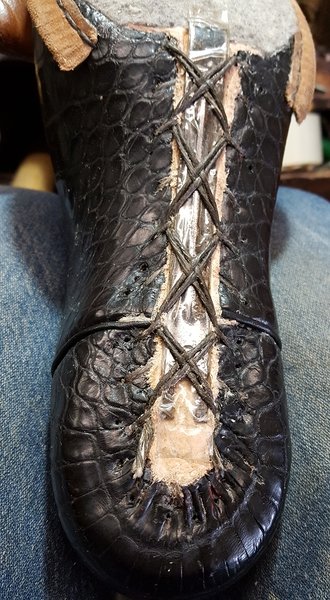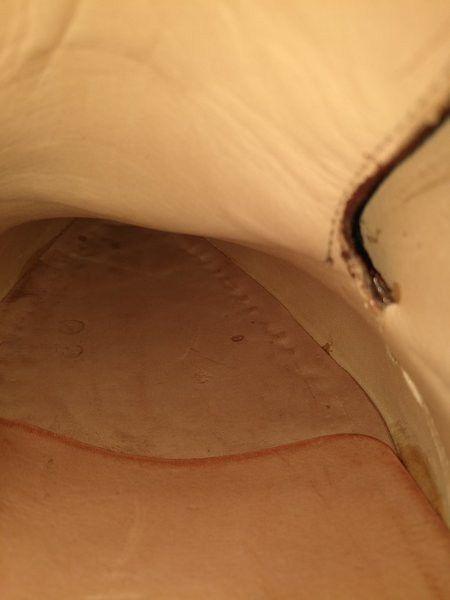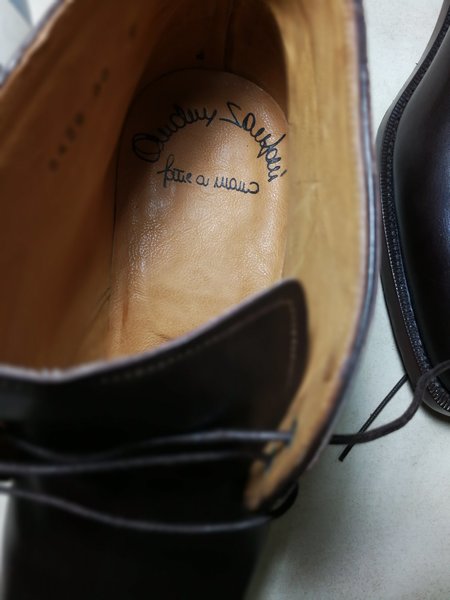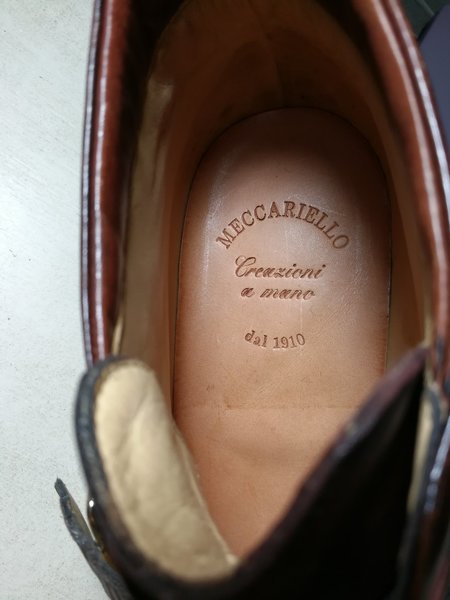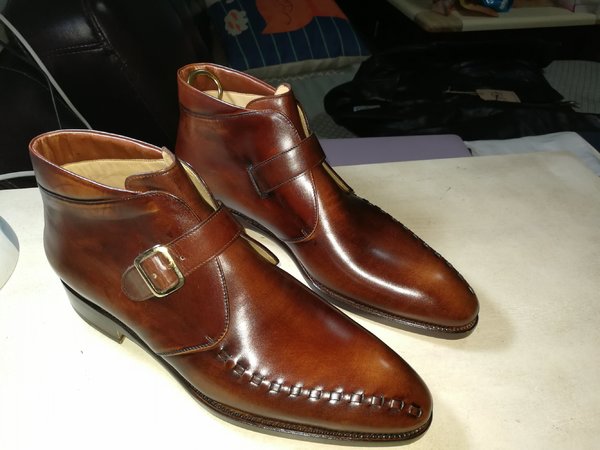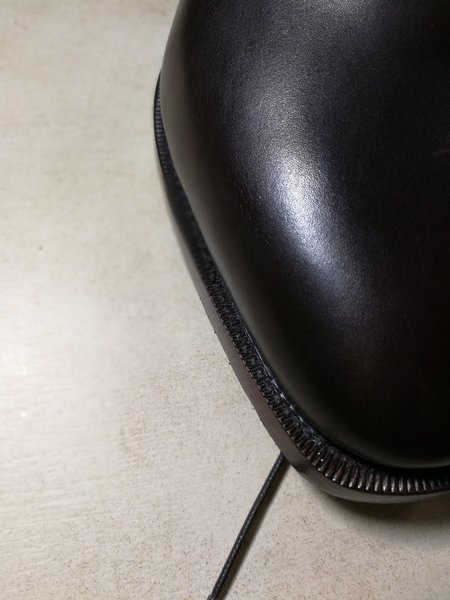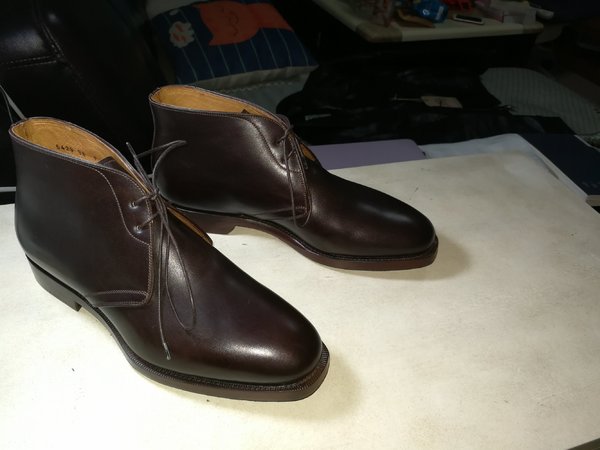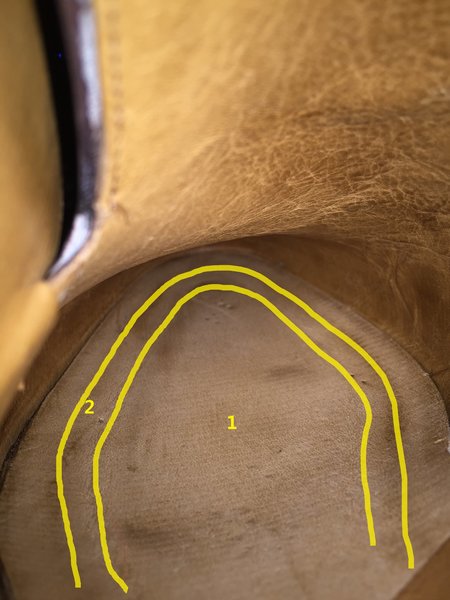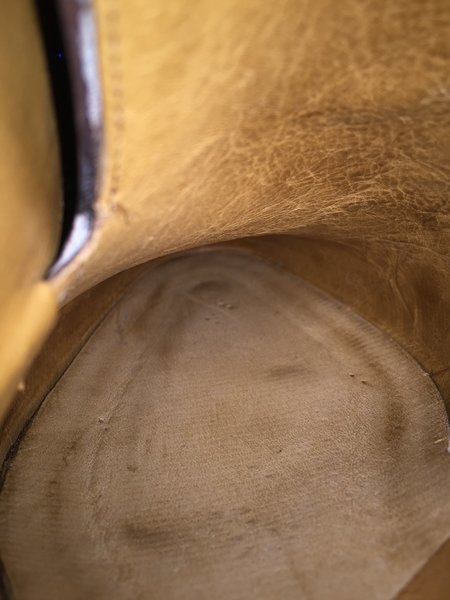-
- Men's Style
- Classic Menswear
- Streetwear and Denim
- Preorders, Group Made-to-order, trunk shows, and o
- Menswear Advice
- Former Affiliate Vendor Threads; a Locked Forum.
- Career and job listings in fashion, mens clothing,
-
- American Trench
- AMIDÉ HADELIN
- Archibald London
- The Armoury
- Arterton
- Besnard
- Canoe Club
- Capra Leather
- Carmina
- Cavour
- Crush Store
- De Bonne Facture
- Drinkwater's Cambridge
- Drop93
- eHABERDASHER
- Enzo Custom
- Epaulet
- Exquisite Trimmings
- Fils Unique
- Gentlemen's Footwear
- Giin
- Grant Stone
- House of Huntington
- IsuiT
- John Elliott
- Jonathan Abel
- Kent Wang
- Kirby Allison
- Larimars Clothing
- Lazy Sun
- LuxeSwap
- Luxire Custom Clothing
- Nicks Boots
- No Man Walks Alone
- Once a Day
- Passus shoes
- Proper Cloth
- SARTORIALE
- SEH Kelly
- Self Edge
- Shop the Finest
- Skoaktiebolaget
- Spier and MacKay
- Standard and Strange
- Bespoke Shoemaker Szuba
- Taylor Stitch
- TLB Mallorca
- UNI/FORM LA
- Vanda Fine Clothing
- Von Amper
- Wrong Weather
- Yeossal
- Zam Barrett
-
Hi, I am the owner and main administrator of Styleforum. If you find the forum useful and fun, please help support it by buying through the posted links on the forum. Our main, very popular sales thread, where the latest and best sales are listed, are posted HERE
Purchases made through some of our links earns a commission for the forum and allows us to do the work of maintaining and improving it. Finally, thanks for being a part of this community. We realize that there are many choices today on the internet, and we have all of you to thank for making Styleforum the foremost destination for discussions of menswear. -
This site contains affiliate links for which Styleforum may be compensated.
-
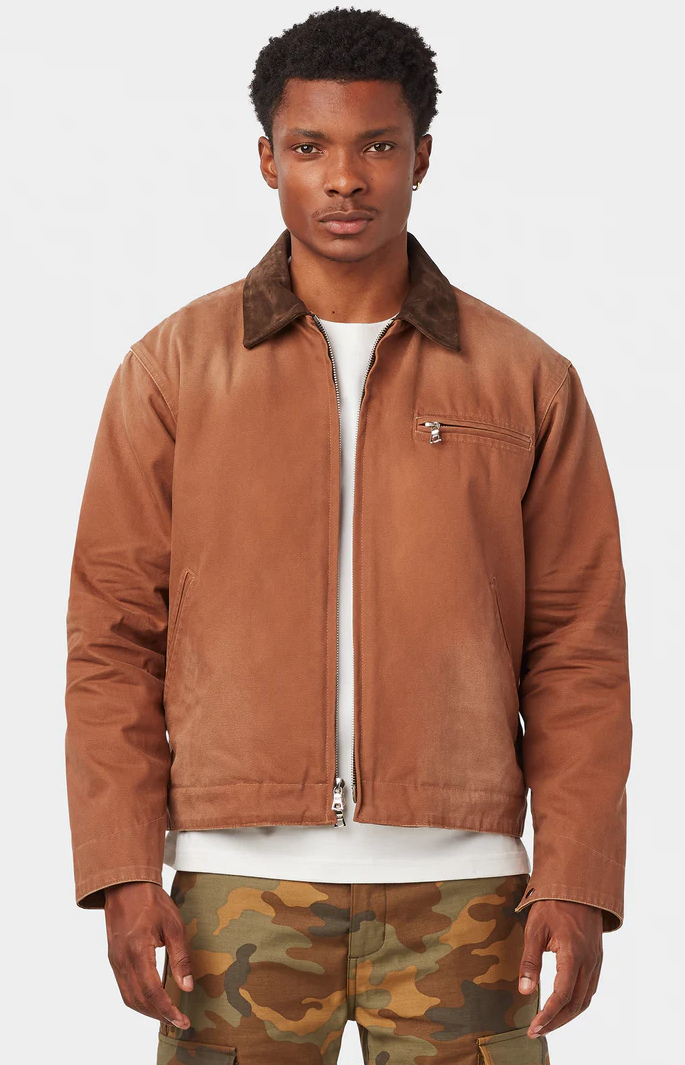
UNIFORM LA CHILLICOTHE WORK JACKET Drop, going on right now.
Uniform LA's Chillicothe Work Jacket is an elevated take on the classic Detroit Work Jacket. Made of ultra-premium 14-ounce Japanese canvas, it has been meticulously washed and hand distressed to replicate vintage workwear that’s been worn for years, and available in three colors.
This just dropped today. If you missed out on the preorder, there are some sizes left, but they won't be around for long. Check out the remaining stock here
Good luck!.
-
STYLE. COMMUNITY. GREAT CLOTHING.
Bored of counting likes on social networks? At Styleforum, you’ll find rousing discussions that go beyond strings of emojis.
Click Here to join Styleforum's thousands of style enthusiasts today!
Styleforum is supported in part by commission earning affiliate links sitewide. Please support us by using them. You may learn more here.
You should upgrade or use an alternative browser.
Sole Welting
- Thread starter Quarantanove
- Start date
- Watchers 111
MoneyWellSpent
Distinguished Member
- Joined
- Oct 4, 2012
- Messages
- 2,697
- Reaction score
- 1,178
I think it's readily apparent that BR is a more structurally sound construction, being that there is a single row of stitching holding the midsole, upper, and insole together. Followed by the final stitch holding on the outsole. This being opposed to the cemented canvas gemming that everything is stitched to in GY. If structural soundness is the main driving force in the choice, I think it's a relatively easy decision. Dust and dirt won't impact the integrity of a BR shoe the way it could mess with the canvas gemming adhesion. The same should be true for water getting in and damaging the gemming, which won't be a factor (short of rotting from improperly drying) with BR.
However, I think the waters get muddy from there.
At best, the vast majority of BR shoes out there are made from the same quality materials as the GY-welted manufacturers that we generally discuss here in SF. Sure, there are GY-welted shoes made from cardboard, but nobody here is wearing those. But, unfortunately, the same can't be said for BR. Some of the BR manufacturers that are very respected for their product (albeit from the factory context) from a finishing standpoint and upper leather quality, use other components that are inferior to the GY competitors, such as fiberboard insoles. Very few BR shoes surpass the GY shoes that SF members wear in the quality of their components. I find that quite frustrating as what would otherwise be a structurally sound and good looking shoe may have cheap foam fillers and fiberboard in it.
Comfort is subjective, but from my perspective, GY may have an edge here over BR. Personally, I don't like foam of any kind in my shoes (perhaps with the exception of a small piece under the heel for a 3/4 length sock liner. I like leather. If I want foam, I'll put on my tennis shoes and go for a run. The issue with BR becomes that many manufacturers put foam in to provide cushion against the fact that there is only a thin leather insole (same thickness at best, compared to a GY shoe) resting against another thin leather midsole, which is butted up against a hard outsole. There isn't any real hope for a "footbed" to be formed here. I put footbed in quotation marks there because I recognize that even the contours formed in a GY insole after cork displacement is still just an imitation of the intended footbed created from high quality insole shoulder. However, that seems to be the best anyone has really come up with in machine made shoes over the last 160 years.
The "footbed" created in a GY-welted shoe, due to cork displacement, stays in place until it's tampered with during resoling. While I don't buy the marketing schemes that there is "cushion" provided by the cork (it's too thin), there is still some comfort provided by the molded shape that your foot fits into. Even if it's a poor imitation of a proper footbed from good quality shoulder, I think it's better than the BR alternative which is either foam or solid leather which won't mold to your foot at all. I don't think there is any substantial difference between the constructions from a shock-transfer standpoint, when the foot strikes the ground, unless the BR shoe has foam in it.
Here is are some good cross-sections of a BR shoe with no foam, as well as one with a side-by-side comparison of a GY shoe. It's easy to see the substantial difference in how much a GY shoe molds to the foot:
Again, reiterating that comfort has a major degree of subjectivity to it, and there will certainly be a lot of people who would favor the harder feeling BR shoe for whatever reason. Then, there is the row of internal stitching to consider. This seems to drive some people crazy, while others seem to not even notice it. I suppose you could cover it with a full-length sock liner, but for whatever reason, few manufacturers seem to do this. The GY shoe will offer the same smooth surface that a hand-welted shoe does, if the stitching bothers you.
Moving to resoling, I think that there is a degree to which the ease of resoling is a toss up, assuming that your welt (GY) or midsole (BR) is intact when the time comes. Both should simply involve removing the worn outsole and stitching on a new one, with the upper being left in place. However, if/when the time comes for more major surgery, it becomes muddy again. Some of the reasons for this muddiness are a result of the state of the industry rather than an actual construction issue. McKay stitching machines seem to be harder to come by, which means that replacing the midsole won't be as easy at your local cobbler, whereas stitching on a new welt (even if it's done by hand) is far easier. If you send them to the factory, then it's a moot point isn't it? You are already going through the trouble and expense of returning them to the manufacturer so the difference in the ease of repair is being addressed while you sit on your couch and watch TV waiting for the UPS guy to return your repaired shoes. The issue of the upper being distorted or damaged is greater in a BR shoe during insole replacement since the upper is cemented to the bottom of the insole, which means it has to be literally torn/cut away from the insole in order to put in a new one. In a GY shoe, by comparison, the upper simply comes loose when the welt is cut away and the insole lifts right out. Re-lasting is required in both scenarios though.
So, I think there are pros and cons to both factory made construction systems and you have to pick your poison. If you don't like the flavor of poison, then save your pennies a lot longer for a nice pair of hand-welted shoes.
![peepwall[1].gif](http://files.styleforum.net/images/smilies/peepwall[1].gif)
MoneyWellSpent
Distinguished Member
- Joined
- Oct 4, 2012
- Messages
- 2,697
- Reaction score
- 1,178
It is, as you said, marketing. And meant to obfusticate and mislead. Same same as the numerous examples you provided some time ago in this very thread of companies claiming that GY was the strongest and best and most traditional way of making a shoe.
It's like "genuine faux leather."
Parenthetically, for those less familiar with shoe construction, in the above illustration the "spot" marking the insole is out of place--it's pointing to another layer of fill over the shank (the "metal sheet"). The "special toe puff" is another obfuscation --it's celastic (does that make it "special?"), and the "comfort padding anti-shock" is simply a foam heel pad under a leather half sock.
Some of this may be a poor translation but it's still illustrative of why stuff posted on the 'net has to always be viewed with some skepticism.
Agree 100%. The quality of the image suggests that it was generated by someone trying to sell shoes. Perhaps the manufacturer of the shoe in the picture. I really don't know who it originally belonged to, as the image has been out there for a long time.
- Joined
- Jan 8, 2008
- Messages
- 10,132
- Reaction score
- 5,714
So, as FGU asked, what are some of the pitfalls of sank-less construction?. How this affects to your feet?
answered this already...
But there is a company making work and loggers boots in the PNW, and I have seen their box beam boots at inch and a quarter. After a moderate amount of wear the shank/waist of the boot starts to break down and the arch of the foot is left unsupported.
To some extent this applies at any heel height. The foot was not designed to be elevated at the back of the foot for any length of time. Prolonged bearing of weight without proper support will cause the bones and ligaments to shift and real damage can be done. The Tarsus Seven group is particularly vulnerable I'm told.
MoneyWellSpent
Distinguished Member
- Joined
- Oct 4, 2012
- Messages
- 2,697
- Reaction score
- 1,178
I know you don't like to comment on specific brands/makers, but it is well known that Allen Edmonds does not use a shank in their shoes. As the heel is > .5", they should use shanks in your opinion? What are some of the pitfalls of shank-less construction?
The AE shoes that I've handled have a 1/2 inch heel measured from the ground to the waist of the shoe where it meets the sole.
DW, is this the proper place to measure heel height when determining the need for a shank, or what type of shank to use? Since that is the area that the shoe would collapse, that is what would make sense to me.
AE also 360 welts their shoes, which they claim to be an additional reason why they don't need shanks (obviously combined with the heel height that is on the border of needing one). I don't know if their reasoning is true or not, from a biomechanical standpoint and how it impacts the foot over time.
MoneyWellSpent
Distinguished Member
- Joined
- Oct 4, 2012
- Messages
- 2,697
- Reaction score
- 1,178
I need more concentration, sorry.
Sorry for the long-windedness. Grab a cup of coffee, it tastes good combined with the smell of leather.

- Joined
- Jan 8, 2008
- Messages
- 10,132
- Reaction score
- 5,714
I like a lot of what you've said here...and agree with it. But let me offer some minor quibbles/observations. A good quality insole, capable of forming a deep footbed, is exactly the same as the "the BR alternative...solid leather". All things being equal--in other word the same temper of leather being used as well as the same thickness---there should be no difference. The thickness of the insole in the BR shown in your first photo is probably about the same thickness as what would be used in a high end GY. As far as leather insole in GY shoes...I have seen photos on SF of supposedly high end shoes using insoles that were suspect at least for being leatherboard rather than leather. So, while I can't name names...even if I were so inclined...they are out there and for certain the trend is in that direction. After all...and picking up on the other part of this discussion...leatherboard is still leather, isn't it? As for resoling or even relative quality/worth--I've always stipulated that for BR to meet my criteria as a lower cost alternative to HW, it must be built on an insole of similar quality and substance as what would be used in HW. Any other approach is simply moving in the same direction as GY. It's worth noting, with regard to resoling that in all likelihood there are far more McKay machines in cobbler shops in the US than Goodyear inseaming machines. I understand that's a little beside the point you were making but it opens possibilities. Also...although not questioning your assertion that BR manufacturers don't use a full sock to cover the stitching...I do use a full sock. And I can't, for the life of me understand what they are thinking if they don't. It's another expense and more time consuming, of course, but essential in my opinion. That said, it's all of a piece...as we both know. --So I think that the BR vs. GY-welted discussion is a good one and it is particularly relevant to those who can't afford a pair of shoes which are hand-welted and made with good quality insoles cut from from the shoulder. I think it's readily apparent that BR is a more structurally sound construction, being that there is a single row of stitching holding the midsole, upper, and insole together. Followed by the final stitch holding on the outsole. This being opposed to the cemented canvas gemming that everything is stitched to in GY. If structural soundness is the main driving force in the choice, I think it's a relatively easy decision. Dust and dirt won't impact the integrity of a BR shoe the way it could mess with the canvas gemming adhesion. The same should be true for water getting in and damaging the gemming, which won't be a factor (short of rotting from improperly drying) with BR. However, I think the waters get muddy from there. At best, the vast majority of BR shoes out there are made from the same quality materials as the GY-welted manufacturers that we generally discuss here in SF. Sure, there are GY-welted shoes made from cardboard, but nobody here is wearing those. But, unfortunately, the same can't be said for BR. Some of the BR manufacturers that are very respected for their product (albeit from the factory context) from a finishing standpoint and upper leather quality, use other components that are inferior to the GY competitors, such as fiberboard insoles. Very few BR shoes surpass the GY shoes that SF members wear in the quality of their components. I find that quite frustrating as what would otherwise be a structurally sound and good looking shoe may have cheap foam fillers and fiberboard in it. Comfort is subjective, but from my perspective, GY may have an edge here over BR. Personally, I don't like foam of any kind in my shoes (perhaps with the exception of a small piece under the heel for a 3/4 length sock liner. I like leather. If I want foam, I'll put on my tennis shoes and go for a run. The issue with BR becomes that many manufacturers put foam in to provide cushion against the fact that there is only a thin leather insole (same thickness at best, compared to a GY shoe) resting against another thin leather midsole, which is butted up against a hard outsole. There isn't any real hope for a "footbed" to be formed here. I put footbed in quotation marks there because I recognize that even the contours formed in a GY insole after cork displacement is still just an imitation of the intended footbed created from high quality insole shoulder. However, that seems to be the best anyone has really come up with in machine made shoes over the last 160 years. The "footbed" created in a GY-welted shoe, due to cork displacement, stays in place until it's tampered with during resoling. While I don't buy the marketing schemes that there is "cushion" provided by the cork (it's too thin), there is still some comfort provided by the molded shape that your foot fits into. Even if it's a poor imitation of a proper footbed from good quality shoulder, I think it's better than the BR alternative which is either foam or solid leather which won't mold to your foot at all. I don't think there is any substantial difference between the constructions from a shock-transfer standpoint, when the foot strikes the ground, unless the BR shoe has foam in it. Here is are some good cross-sections of a BR shoe with no foam, as well as one with a side-by-side comparison of a GY shoe. It's easy to see the substantial difference in how much a GY shoe molds to the foot:

Again, reiterating that comfort has a major degree of subjectivity to it, and there will certainly be a lot of people who would favor the harder feeling BR shoe for whatever reason. Then, there is the row of internal stitching to consider. This seems to drive some people crazy, while others seem to not even notice it. I suppose you could cover it with a full-length sock liner, but for whatever reason, few manufacturers seem to do this. The GY shoe will offer the same smooth surface that a hand-welted shoe does, if the stitching bothers you. Moving to resoling, I think that there is a degree to which the ease of resoling is a toss up, assuming that your welt (GY) or midsole (BR) is intact when the time comes. Both should simply involve removing the worn outsole and stitching on a new one, with the upper being left in place. However, if/when the time comes for more major surgery, it becomes muddy again. Some of the reasons for this muddiness are a result of the state of the industry rather than an actual construction issue. McKay stitching machines seem to be harder to come by, which means that replacing the midsole won't be as easy at your local cobbler, whereas stitching on a new welt (even if it's done by hand) is far easier. If you send them to the factory, then it's a moot point isn't it? You are already going through the trouble and expense of returning them to the manufacturer so the difference in the ease of repair is being addressed while you sit on your couch and watch TV waiting for the UPS guy to return your repaired shoes. The issue of the upper being distorted or damaged is greater in a BR shoe during insole replacement since the upper is cemented to the bottom of the insole, which means it has to be literally torn/cut away from the insole in order to put in a new one. In a GY shoe, by comparison, the upper simply comes loose when the welt is cut away and the insole lifts right out. Re-lasting is required in both scenarios though. So, I think there are pros and cons to both factory made construction systems and you have to pick your poison. If you don't like the flavor of poison, then save your pennies a lot longer for a nice pair of hand-welted shoes.

- Joined
- Jan 8, 2008
- Messages
- 10,132
- Reaction score
- 5,714
The AE shoes that I've handled have a 1/2 inch heel measured from the ground to the waist of the shoe where it meets the sole.
DW, is this the proper place to measure heel height when determining the need for a shank, or what type of shank to use? Since that is the area that the shoe would collapse, that is what would make sense to me.
AE also 360 welts their shoes, which they claim to be an additional reason why they don't need shanks (obviously combined with the heel height that is on the border of needing one). I don't know if their reasoning is true or not, from a biomechanical standpoint and how it impacts the foot over time.
Measuring the heel height at the breast of the heel is correct...if only and simply, because that's where the lastmakers measure the last for heel height when they "trap" it.
I think the 360 argument is bogus.
What I'm not absolutely sure of (and I don't know anyone who is) relates to the fact that many of the manufacturers who don't use a shank...or use a simulacrum...seem to incorporate an excessive amount of "heel spring" (gap under the back of the heel). Whether this is thought to be a way to fudge the issue or to bolster an inherently weak shank, is the question...and even more so, whether it is valid on its face.
MoneyWellSpent
Distinguished Member
- Joined
- Oct 4, 2012
- Messages
- 2,697
- Reaction score
- 1,178
Thanks for your thoughts!
Can you go into greater detail on the expected footbed forming qualities you'd expect to see between the insole leather found on the BR shoes in question and the same level of quality found in better GY shoes? I'd expect that it would be substantially better in a hand-welted shoe, being that it's cut from the proper shoulder area, where the grain is almost "fluffy" and it's twice as thick.
I wonder if the machines would be able to stitch the shoe properly if they tried to use an insole of this quality for BR construction? I had assumed that to be one of the reasons for using the same grade insole (at best) as a GY shoe, even in the most high end BR shoes. In other words, it would seem to be a great selling point if someone decided to make shoes with insoles of such quality that they could take hand-welting, but offer them at machine-made prices.
No need to go into details, I've seen the conversations you refer to about suspect insole quality on higher end GY shoes. It's unfortunate that it has to be taken into consideration.
MoneyWellSpent
Distinguished Member
- Joined
- Oct 4, 2012
- Messages
- 2,697
- Reaction score
- 1,178
Measuring the heel height at the breast of the heel is correct...if only and simply, because that's where the lastmakers measure the last for heel height when they "trap" it.
I think the 360 argument is bogus.
What I'm not absolutely sure of (and I don't know anyone who is) relates to the fact that many of the manufacturers who don't use a shank...or use a simulacrum...seem to incorporate an excessive amount of "heel spring" (gap under the back of the heel). Whether this is thought to be a way to fudge the issue or to bolster an inherently weak shank, is the question...and even more so, whether it is valid on its face.
Great points, thanks.
Zapasman
Distinguished Member
- Joined
- Oct 2, 2014
- Messages
- 3,726
- Reaction score
- 2,937
Great post MWS!!. Thank you very much indeed. No one comments too much about BR construcction in SF and I see a good alternative to GYW shoes if quality components are used.So, I think there are pros and cons to both factory made construction systems and you have to pick your poison. If you don't like the flavor of poison, then save your pennies a lot longer for a nice pair of hand-welted shoes.
![peepwall[1].gif](http://files.styleforum.net/images/smilies/peepwall[1].gif)
Do you any BR manufacturer (maybe italian) that hand last and stich the uppers instead of gluing them to the insole?.
I would really like to know Ron Riders opinion about the issue.
- Joined
- Oct 16, 2006
- Messages
- 38,393
- Reaction score
- 13,643
MoneyWellSpent
Distinguished Member
- Joined
- Oct 4, 2012
- Messages
- 2,697
- Reaction score
- 1,178
Great post MWS!!. Thank you very much indeed. No one comments too much about BR construcction in SF and I see a good alternative to GYW shoes if quality components are used.
Do you any BR manufacturer (maybe italian) that hand last and stich the uppers instead of gluing them to the insole?.
I would really like to know Ron Riders opinion about the issue.
Ron Rider's shoes are BR for the most part. He offers some hand welted ones as well, IIRC.
As pB said, Ron Rider commissions BR shoes, and I would think they'd be at the upper end of quality from that construction standpoint.
However, I don't know of any manufacturers that hand-last and stitch the uppers instead of gluing them (short of individuals doing it like DW showed in his picture above). I suspect that it's not done anywhere, as it would defeat the purpose of the construction method (being mechanization and factory production). It's not considered a replacement for a hand-welted shoe, so most people willing to go through the hassle of making a Blake-rapid style shoe by hand would probably just default to a traditional hand-welted shoe. I think I remember DW saying that he only did the one he showed pictures of to see if he could do it. DW, please correct me if I'm wrong? I don't want to speak for you.
Edit: Perhaps I'm wrong, I see in DW's post that he said he's done that construction fairly regularly. That said, I still stand by my belief that you won't find anyone who mass produces shoes made with BR construction that use any other method other than the standard cementing.
May I ask why that aspect is important to you?
Classic Menswear Featured products
-
Carmina - Norwegian Derby Shoes Introducing the classy six eyelet split toe derby in a burgundy Shell Cordovan from Horween Chicago. This style features a single oak-bark tanned sole from Rendembach Jr. and full calf lining color brown.
-
 LuxeSwap Auction - Vintage Antique United States Naval Navy Denim Deck Jacket A piece for denim heads, vintage collectors, streetwear enthusiasts and menswear enthusiasts alike, this extremely rare early US Naval issued deck jacket in raw denim is not likely to ever show up at auction again anytime soon. A Haleys Comet of menswear items, offered at auction at a $9.99 starting bid with no reserve.
LuxeSwap Auction - Vintage Antique United States Naval Navy Denim Deck Jacket A piece for denim heads, vintage collectors, streetwear enthusiasts and menswear enthusiasts alike, this extremely rare early US Naval issued deck jacket in raw denim is not likely to ever show up at auction again anytime soon. A Haleys Comet of menswear items, offered at auction at a $9.99 starting bid with no reserve. -
 Kirby Allison - Luxury Suit Hanger - $32 Kirby Allison's Luxury Wooden Suit Hangers protect your suits from stretched collars and droopy shoulders. Our wooden suit hangers provide five-times more support than average hangers and will protect and extend the life of your most important garments.
Kirby Allison - Luxury Suit Hanger - $32 Kirby Allison's Luxury Wooden Suit Hangers protect your suits from stretched collars and droopy shoulders. Our wooden suit hangers provide five-times more support than average hangers and will protect and extend the life of your most important garments.
Latest posts
- Replies
- 5,892
- Views
- 504,085
- Replies
- 9,210
- Views
- 519,731
- Replies
- 927
- Views
- 324,341
- Replies
- 1,288
- Views
- 158,872
- Replies
- 25,732
- Views
- 5,108,409
Similar threads
- Replies
- 0
- Views
- 274
Featured Sponsor
Forum Sponsors
- American Trench
- AMIDÉ HADELIN
- Archibald London
- The Armoury
- Arterton
- Besnard
- Canoe Club
- Capra Leather
- Carmina
- Cavour
- Crush Store
- De Bonne Facture
- Drinkwater's Cambridge
- Drop93
- eHABERDASHER
- Enzo Custom
- Epaulet
- Exquisite Trimmings
- Fils Unique
- Gentlemen's Footwear
- Giin
- Grant Stone
- House of Huntington
- IsuiT
- John Elliott
- Jonathan Abel
- Kent Wang
- Kirby Allison
- Larimars Clothing
- Lazy Sun
- LuxeSwap
- Luxire Custom Clothing
- Nicks Boots
- No Man Walks Alone
- Once a Day
- Passus shoes
- Proper Cloth
- SARTORIALE
- SEH Kelly
- Self Edge
- Shop the Finest
- Skoaktiebolaget
- Spier and MacKay
- Standard and Strange
- Bespoke Shoemaker Szuba
- Taylor Stitch
- TLB Mallorca
- UNI/FORM LA
- Vanda Fine Clothing
- Von Amper
- Wrong Weather
- Yeossal
- Zam Barrett
Members online
- PGS
- MrImpractical
- JayDotz
- knitsandlifts
- Gibonius
- Fenners81
- mogili222
- pongpisit
- Lkeck3
- moocow
- jazerad
- Sartoriamo
- __PG__
- stephenaf2003
- TheODGuy
- oudwood
- soender
- WhyUEarly
- VaderDave
- Montaigne
- malcb33
- natedaniels
- Ashen
- owenshill
- Conan04
- howardeb
- adamdurbin
- Ace_Face
- throbgorkas
- lagsun
- ellsbebc
- Shoenut
- iouah
- casterofdreams
- ianGP
- Johnny80
- voxthriftstoria
- khanew997
- tomsocal
- Baron
- brokencycle
- jp117
- only1swami
- Sankalp
- Master Shake
- LA Guy
- Chaconne
